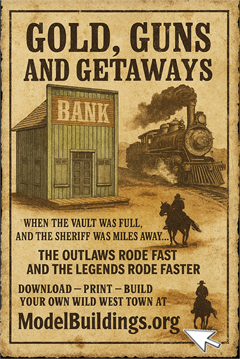Everything on model trains, model railroads, model railways, locomotives, model train layouts, scenery, wiring, DCC and more. Enjoy the world's best hobby... model railroading!
HO Farrer Siding
Colin has sent in this article and photos for publication. Thanks Colin for sharing your thoughts with others in the model railroading community.
Several model train makers produce forms of ‘Rollers’ which allow a Locomotive to be operated although stationary, as in the same way a car can be tested on a Dynamometer. I recently obtained a set of 4 Bachman ‘EZ’ Rollers, which are designed to sit snugly on top of HO track as shown. (pic 1)
As there are locos with more than 4 driven axles and other parts such as trucks and bogies which need supporting, I designed the Testbed shown (pic 2) to maximise the use of the 4 rollers.
The 4 rollers sit between 2, 12 x 12 aluminium angle strips 90mm long facing inwards which are in turn clamped between 2 longer pieces of angle 300 mm long facing outwards. The long back strip is screwed firmly to the wooden base while the front strip has slotted screw holes to allow in/out movement. Two short pieces of track on wooden blocks also fit snugly between the long strips and can be slid in and out as required. The rollers and blocks are adjusted to suit the loco under test then the 2 screws are tightened lightly. (pic 3)
These rollers were meant for 2 rail systems but can accommodate 3 rail locos as the material between the rollers is plastic. A small clip is used to get power to the centre pickup shoe. On 2 rail the outer strips conduct current into the rollers so the tightening screws must be insulated at one end. I mainly use this for testing locos which I convert to DCC but it is useful for all sorts of maintenance, and particularly helpful in locating bent axles and other mechanical problems which are hard to diagnose when the loco is tearing around a loop out of reach and sight.















Leave a Reply